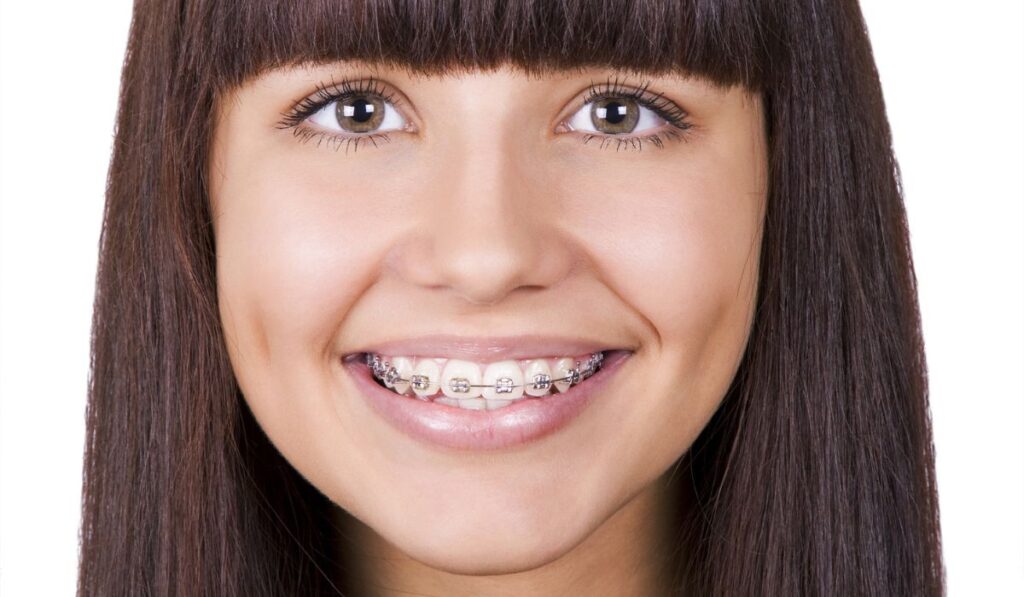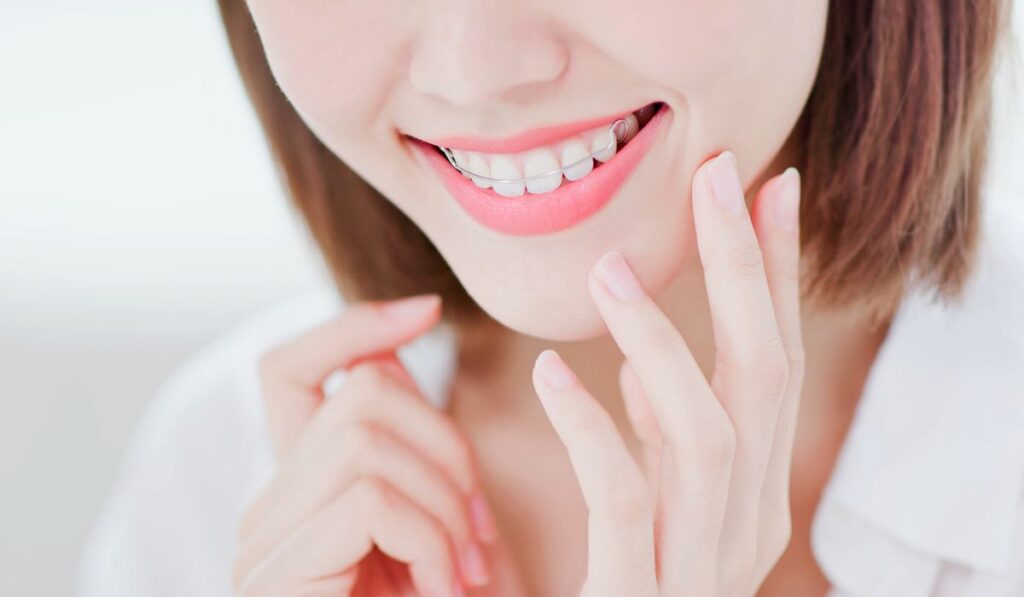For many people, getting braces is more than just a simple orthodontic treatment: it’s also a way to improve their confidence, self-image, and their overall quality of life. When an orthodontists suggests braces, they’ve considered not only dental malocclusions, but orofacial anatomy like your jawline, lips, and overall profile. But how will you look after the fact?
Braces can change the appearance of your face by correcting misalignments of your teeth and jaw. They don’t necessarily give you dimples, but certain changes in the facial structure can make it look like you have them. If you already have dimples, wearing braces can make them stand out more.
By the time your braces treatment achieves its intended results, it’s likely that your facial features will appear more in harmony with each other. Let’s look at the ways braces can affect the structure of your face, get the dirt on dimples, and also discuss what to expect after you get your braces removed so you can have realistic expectations for the big reveal.
Can Braces Affect Your Face Structure?
Yes, but not for everyone. Once your braces fix malocclusions like overbites, underbites, open bites, misaligned jaw, and periodontal problems, you’ll see a visible difference in your face.
However, these changes are more prominent in growing children and adolescents because the braces have the opportunity to work with the natural development of their bodies. This is why orthodontists recommend braces mostly for teenagers.
If you are an adult getting braces, however, the changes in your facial structure won’t be as dramatic as they would be for a teenager. Nonetheless, braces can still give excellent results for adults who want to straighten their teeth and fix a number of other dental malocclusions.
Can Braces Cause Dimples?

A dimple is a natural indentation on the skin of your cheek that becomes more prominent when you smile.
Because of the way your face changes when you wear braces, it is possible to gain the appearance of having dimples.
However, braces cannot necessarily change your facial structure enough to give you prominent and lasting dimples.
What Causes Dimples?
Natural facial dimples are assumed to be inherited. Funnily enough, even though dimples are a much sought-after feature, it is an anomaly of the muscle which causes the dent in the cheek when smiling.
For those who haven’t inherited dimples, creating them requires removing tissue from the inside of your mouth to create a dent. This is not something braces do.
However, because of the way braces exert constant pressure on your jaws and teeth to straighten their alignment, there can be certain structural changes that happen to your face that can make a dimple-like dent appear. Whether this happens completely depends on your existing facial structure.
When people claim that braces gave them a dimple, it’s usually because they already had a partial dimple that was hidden by their jaw position and dental malocclusions. Once the braces move the jaw and teeth to a desirable position, the dimple appears more prominent.
How Will My Face Look After Braces?
Whether you wear traditional brackets or clear self-ligating braces, the technique is the same: applying gentle but consistent pressure to move teeth and jawbone into a more desirable shape. Here are some of the changes that you can expect in your face structure after completing your braces treatment:
Improved Teeth Alignment
The desire for regularly spaced teeth, beautifully aligned in a straight and aesthetically pleasing manner, is the main reason people get braces. No matter the age you get dental braces, a nicer alignment of teeth is a change that you can expect after braces.
A Better Bite
Bite issues like overbite, underbite, and open bite and dental malocclusions that prevent your upper and lower teeth from fitting together are another common reason that orthodontists recommend braces.
Overbite is a condition in which the bottom teeth bite into the roof of the mouth, which often leads to damage of the front teeth and the gum tissue due to friction. An underbite is when the lower teeth overlap the front teeth when smiling.
Other than being not entirely appealing aesthetically, a deep underbite can also cause oral injury as well as speech difficulties. Open bite is when there is a noticeable gap between a person’s upper and lower teeth. This also makes it difficult to speak and eat at times.
Properly applied dental braces can fix bite issues like this, which will make a visible change to your overall facial structure and appearance.
Corrected Jaw Alignment
When the goal of your braces treatment is to correct a misalignment of the jaw, it can make visible changes to your lower facial structure. However, jaw alignment is more effective and prominent in growing children and adolescents. For adults, the visible change in the facial structure is not possible without long-term treatment.
What to Expect After Getting Your Braces Removed
On average, it takes about two years (24+ months) to successfully complete a dental braces treatment. That is a long time! So, once you overcome all the challenges that come with wearing braces and get through the 24 months, you finally get your braces removed. Now what?
Here are a few things you can expect once your braces are out:
Removing the Dental Glue
Immediately after your orthodontist removes your braces, you have to sit through a deep cleaning process which involves them using a scraping tool to remove any remaining dental cement or glue used to keep your braces fixed. The feeling is somewhat uncomfortable, but you will feel great afterward with your freshly clean teeth.
Maintaining Your Oral Hygiene Routine
Wearing braces involves maintaining a rigorous dental cleaning and hygiene routine. Just because you’ve gotten your braces removed doesn’t mean you can slack on your oral health. Continue to be gentle with your teeth. Brush and floss them thoroughly twice a day and use a good mouthwash after your meals.
Adjusting to a Life Without Braces
If it took you two weeks to get used to having braces in your mouth, it can sometimes take longer to get used to not having them! You may feel odd without having them and the cleaning process may feel strange in the beginning.
Because your brain is used to having the extra hardware in your mouth, it might even feel odd when you speak until your tongue gets used to not having to navigate through your braces when you speak.
Switching to a Retainer

Once the braces are out, your orthodontist will prepare a custom retainer for you to wear so you can maintain your great results. If you do not continue to wear your retainer regularly, there is a risk of your teeth shifting back to what they used to be.
Showing Off Your New Smile
Finally, it is time to go out into the world and show off your big, bright, and brand new smile. It’s very well-earned, so say cheese!


